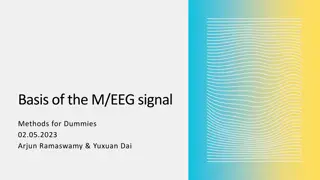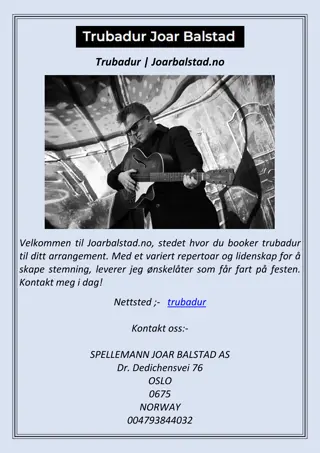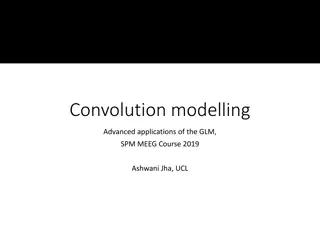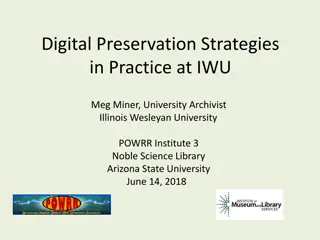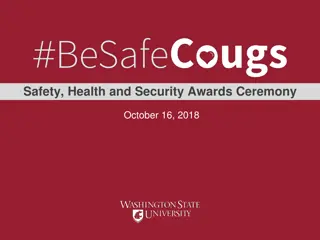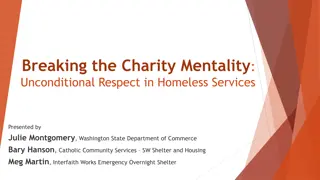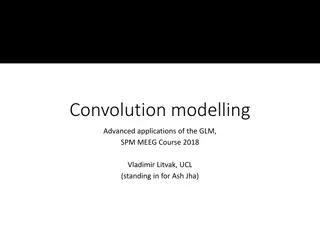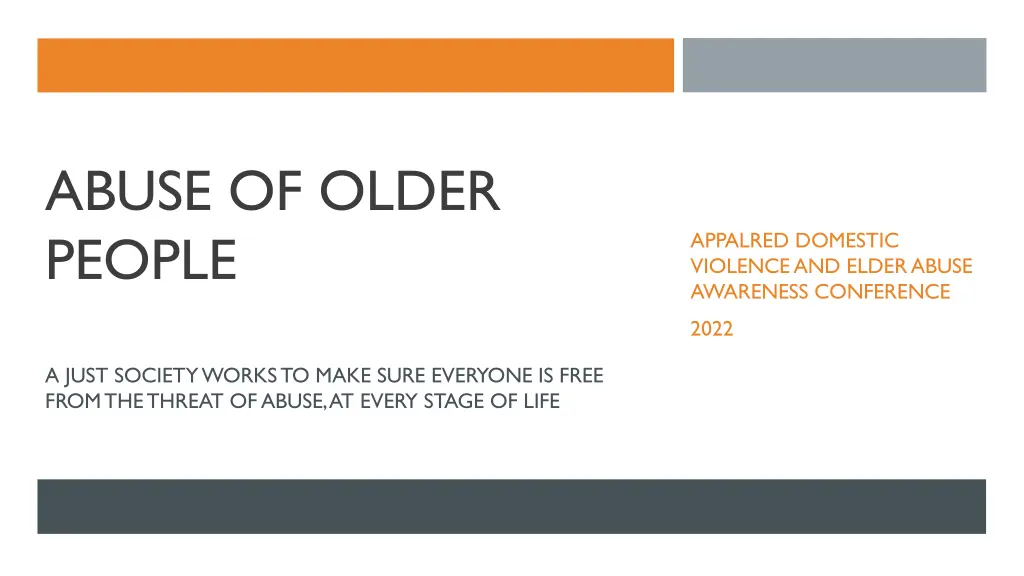
Understanding the Abuse of Older People: Awareness and Prevention
Learn about the different types of abuse older people face, the impact of abuse during COVID-19, warning signs, risk factors, and resources available for prevention and support. Explore the prevalence of elder abuse and the importance of reporting and screening to ensure the safety of older adults.
Download Presentation

Please find below an Image/Link to download the presentation.
The content on the website is provided AS IS for your information and personal use only. It may not be sold, licensed, or shared on other websites without obtaining consent from the author. If you encounter any issues during the download, it is possible that the publisher has removed the file from their server.
You are allowed to download the files provided on this website for personal or commercial use, subject to the condition that they are used lawfully. All files are the property of their respective owners.
The content on the website is provided AS IS for your information and personal use only. It may not be sold, licensed, or shared on other websites without obtaining consent from the author.
E N D
Presentation Transcript
ABUSE OF OLDER PEOPLE APPALRED DOMESTIC VIOLENCE AND ELDER ABUSE AWARENESS CONFERENCE 2022 A JUST SOCIETY WORKS TO MAKE SURE EVERYONE IS FREE FROM THE THREAT OF ABUSE, AT EVERY STAGE OF LIFE
Definition and Types of Abuse of Older People Prevalence of Abuse and Impact of Covid Warning Signs Risk Factors for Abuse CONTENTS Mandatory Reporting of Abuse Screening Risk Reduction (a.k.a. Safety Planning) Prevention Resources
CDC: Elder abuse is an intentional act or failure to act that causes or creates risks of harm to an older adult someone age 60 or older often occurring at the hands of a caregiver or trusted person DEFINITION
Based on American Geriatrics Society (AGS) work with the Leaders of Aging Organizations and the FrameWorks Institute, recommendations were proposed for building a more positive public perception of aging LANGUAGE MATTERS They reinforced that words like (the) aged, elder(s), (the) elderly, and seniors should not be used . . . because [they] connote discrimination and certain negative stereotypes. Older adult(s) and older person/people as preferred terminology
Physical Sexual TYPES OF ABUSE OF OLDER PEOPLE Emotional/Psychological Financial Neglect
Of note: Abuse of older people is a largely understudied area, and there is a deficit of robust research, with much less funding for it compared to Child Abuse and Intimate Partner Violence. That may change as our population ages. In 2014 there were 52.4 million Americans 65 and older. By 2040 that will climb to 80 million and comprise approximately 21% of the total population. OUR AGING POPULATION It is expected that by 2030, there will be a 50% increase in the number of older Americans over 65 who require nursing home care.
1 in 10 Americans aged 60+ has experienced some form of elder abuse; for older women, that may be as high as 1 in 6. Note: that is known abuse; many do not disclose estimated that perhaps only 1 in 24 cases is reported to authorities 5 million older Americans are abused each year In 60% of cases the abuser is a family member; 2/3 of those family members are adult children or spouses PREVALENCE OF ABUSE OF OLDER PEOPLE Surprisingly, there have been very few studies to determine accurate rates of abuse in care and other facilities. Annual loss from financial abuse estimated to be at least $36.5 billion National Center on Elder Abuse www.ncea.acl.gov https://ncea.acl.gov/What-We-Do/Research/Statistics-and- Data.aspx#_ednref35
Social isolation, stay-at-home measures, and staff shortages at long-term care facilities have led to sharp increases in abuse cases. One study showed an 83% increase over pre-pandemic rates in reports of abuse of older people in April-May 2020 for those living at home. IMPACT OF COVID PANDEMIC ON RATES OF ABUSE Health measures prevented family members and APS workers from checking on older people, and some were forced to spend stay- at-home time with abusers. Intensity of abuse also increased with pandemic stressors on caregivers leading to escalation of abuse.
Older people become more vulnerable to financial harm with increased use of online services even the ability to transfer real estate and online notary services, etc. - and increased opportunity for physical theft in facilities where family members were kept out. FBI data showed an increase in fraud of 55% between 2019 and 2020. IMPACT OF COVID PANDEMIC ON RATES OF ABUSE Relaxation of background check requirements in the midst of the nursing home staffing crisis led to hiring some care workers who had criminal backgrounds. APS workers were spread thin and couldn t go in person to meet with victims
Covid was weaponized by abusive family members and caretakers who threatened to infect the older person or send them to a nursing home (where presumably they would contract Covid) if they didn t give the abuser money, etc. Alternatively, some protective family members took older loved ones out of nursing homes to avoid infection and isolation, only to hire caregivers who turned out to be abusers Lack of social/government investment in caring for an aging population has resulted overwhelmingly in that responsibility falling on family members who may not be equipped financially or otherwise to handle such caregiving. Poverty definitely exacerbates many of these risks for elders. IMPACT OF COVID PANDEMIC ON RATES OF ABUSE
Hitting, beating, slapping, pushing, shoving, shaking, kicking, pinching, burning, unlawful /excessive/unnecessary use of physical or chemical means to restrain or confine, force- feeding, physical punishment WARNING SIGNS: Bruises, abrasions, welts, lacerations, rope marks, head trauma, bone fractures, open wounds, cuts, punctures, untreated injuries in various stages of healing, sprains, dislocations, internal injuries, bites, strangulation marks, burns, falls, broken or missing assistive devices, medication overdoses/overmedication PHYSICAL ABUSE
Non-consensual sexual or intimate contact of any kind, using force, threats or exploitation of authority, or where the elder lacks capacity to give consent SEXUAL ABUSE WARNING SIGNS: Bruises/lacerations/abrasions around breasts or genitals, sexually transmitted infections, genital or anal bleeding
Infliction of anguish, pain, distress, or fear through verbal or nonverbal communications or acts, including verbal assault, insults, demeaning or humiliating language or behavior, threats, intimidation, humiliation, isolation, and harassment EMOTIONAL AND PSYCHOLOGICAL ABUSE Controlling who the older person sees and who can see them, cutting them off from supportive community, family and friends WARNING SIGNS: Emotional distress, agitation, withdrawal, uncommunicative, unusual behavior (sucking, biting, rocking), sudden behavioral changes, lack of self-care, feelings of despair, sleep disturbances
Forcing victim to: sign over assets, agree to POA, sign a will, hand over cash or allow use of bank cards or checks; failure to pay bills or provide money for needed items; taking money or property without consent; freeloading; stealing WARNING SIGNS: sudden changes in bank account access or balance or banking practices; unexplained withdrawals or transfers; addition of others to accounts or cards; unexplained changes to will or other documents; disappearance or transfer of valuables; substandard care, malnutrition, unpaid bills, evictions, unnecessary services FINANCIAL ABUSE
NOTE: The legal competency of the older victim may be an issue. A capacity assessment may be needed if signs of cognitive impairment are present. The older victim may need: a Social Security representative payee, a conservator, a guardian, or a POA. Keep in mind, those persons might also be abusive. Additionally, the abuser (especially a spouse or partner or ex) may also be older and might also lack capacity/competency, which may make protective services for the abuser necessary once they are removed from a position of access to the victim FINANCIAL ABUSE: NOTE
Refusal or failure to fulfill any part of a persons obligation or duties of care (often self-appointed) including food, water, clothing, shelter, personal hygiene, medicine, assistive devices, comfort and personal safety There is also self-neglect which may co-occur or be triggered by mistreatment or which, left unaddressed, can itself become neglect on the part of the caretaker Abandonment WARNING SIGNS: Dehydration, malnutrition, untreated bed sores, poor personal hygiene, untreated health problems, unsafe or unsanitary living conditions NEGLECT
The presence of some or all of these warning signs may be, or may also be, symptoms of aging, especially with diminished cognitive abilities or dementia, which can complicate things greatly. However, service providers and loved ones should exercise extreme caution in dismissing or discounting any signs of possible abuse, and careful and thorough investigation should always be the standard when signs are present.
Abusers may be family members, care givers, spouse/partner/exs, neighbors, acquaintances, or service providers. There may be multiple abusers over time, or even at one time, as the older person may be experiencing different types of violence at one time. Adult children are the most frequent perpetrators of neglect. WHO ARE THE ABUSERS? Partners and spouses are the most frequent perpetrators of psychological and physical abuse and commit 40% of sexual abuse. Family members and care workers are the most frequent perpetrators of financial abuse. National Center on Elder Abuse www.ncea.acl.gov https://ncea.acl.gov/What-We-Do/Research/Statistics-and-Data.aspx#_ednref35
Social isolation/limited social support one of the most common risk factors across all types of elder abuse Deteriorating health/chronic health problems Loss of mobility Other functional disability Loss of cognitive functioning/cognitive deficit about one in two older people with CI experiences abuse. Deficits in memory, communication, and judgement make it harder for them to be protective or identify and disclose abuse RISK FACTORS FOR ABUSE Dependency on caregivers Financial dependence on others Mental health problems Substance use disorder Prior trauma history Individual caregiver risk factors
Carer is highly financially or emotionally dependent on the elder Older person has poor health Carer has limited access to care services for the older person RISK FACTORS FOR ABUSE: Carer has negative beliefs about aging and older people Carer has poor coping skills RISK FACTORS FOR THE CARER Carer lacks social support Carer has health, mental health, or substance use disorder issues Carer is untrained for caregiving Carer has exposure to other types of abuse during their life, especially as a child
Careless hiring practices, not doing background checks Little administrative oversight, inadequate or no investigation or reporting of suspected abuse/neglect High staff turnover, low pay Lack of training Stressful working conditions Abandoned older persons who have no contact or infrequent contact with family or friends Residents may be abusers as well as victims of abuse RISK FACTORS FOR INSTITUTIONAL ABUSE
Gender (women) - Both older men and older women are at risk for abuse and neglect. But because women make up a higher proportion of our older population, they are more likely to experience certain kinds of abuse. Older women are more likely to experience spouse abuse than are older men. Women 65 years and older are more likely to experience abuse from a family member as well. SOCIAL AND SYSTEMIC DISCRIMINATION AS RISK FACTORS FOR ABUSE Race studies support findings that older people of color are at twice the risk for physical abuse than older white people Poverty 10% of older adults live in poverty; however, that breaks down to about 20% for African Americans and very close to that for Latinx Americans (17%), compared to about 7% for older non-Hispanic white Americans. Healthcare insecurity often tied to race and poverty
Ageism: the systematic stereotyping and discrimination of people based upon their age. Perception that older people are forgetful, inept, fragile, ailing, irritable, burdensome, of little value or worth. AGEISM AS RISK FACTOR FOR ABUSE Implicit bias: bias that occurs automatically and unintentionally, that nevertheless affects judgments, decisions, and behaviors.
Who are older people? Its a diverse group, comprised of all identities! Intersectionality It s basically a lens, a prism, for seeing the way in which various forms of inequality often operate together and exacerbate each other. We tend to talk about race inequality as separate from inequality based on gender, class, sexuality or immigrant status. What s often missing is how some people are subject to all of these, and the experience is not just the sum of its parts. INTERSECTIONALITY, PRIVILEGE, AND ABUSE OF OLDER PEOPLE Kimberle Crenshaw
Privilege: We often talk about the intersecting identities of the people we work with as clients. BUT it s equally as important to examine and acknowledge what privileged space(s) we hold ourselves (or not) and how we bring that privilege with us in our work, and how we can try to at least be cognizant of our privilege, seeing as we usually cannot eliminate it (although it may change over our lifespan, for example, as we ourselves age we may lose the privilege of ableism). INTERSECTIONALITY, PRIVILEGE, AND ABUSE OF OLDER PEOPLE
We must recognize not only the overarching needs of all older persons, but also the unique needs of the older person we are working with, including their self-identity(ies), any violence or trauma in their past, any generational violence, or any racial or other systemic violence they may have experienced. PROVIDING NONDISCRIMINATORY SERVICES TO THE ELDERLY
Meaningful access to services means providing nondiscriminatory services. We can do this by recognizing and believing that each person holds the: Presumption of Innocence: The presumption that neither I nor any aspect of my identity is to blame for violence that has happened to me. When something goes wrong around me, people do not look to me first, or even second, as a probable cause of the problem. PROVIDING NONDISCRIMINATORY SERVICES TO THE ELDERLY Presumption of Worthiness: The presumption that I am worthy, deserving, and good enough to receive time energy, resources, investment, attention, services, respect, and the benefit of the doubt. All survivors are to be treated with dignity. Presumption of Competence: The presumption that I am able to make informed decisions about my life. Survivors are experts regarding their own experiences, circumstances, and options, and, as such, should be afforded the opportunity to make decisions for themselves.
KRS 209.030: Protection Of Adults Any person having reasonable cause to suspect an adult has suffered abuse, neglect, or exploitation shall report to CHFS Adult: 18 yrs. or older who because of mental or physical dysfunctioning is unable to manage his/her own resources, carry out the activity of daily life, or protect him/herself from neglect/exploitation/hazardous/abusive situation without assistance from others MANDATORY REPORTING OF ADULT ABUSE Abuse: infliction of injury, sexual abuse, unreasonable confinement, intimidation, or punishment resulting in physical/mental pain or injury Neglect: where the adult is unable to perform/obtain the goods/services necessary to maintain health/welfare or deprivation of same by a caretaker Exploitation: obtaining/using the adult s resources, including funds, assets, property by deception, intimidation, or similar means with intent to deprive
KENTUCKY ABUSE HOTLINE 1 (877) 597 2331 OR HOW TO REPORT ADULT ABUSE DCBS CentralizedWeb Intake Portal: https://prd.webapps.chfs.ky.gov/reportabuse/home.aspx (note: the portal is not checked 24/7 so it s not recommended to use it if there is any need for a quick response)
KRS 209A.130 Not a mandatory reporting requirement Mandatory providing of information If a professional has reasonable cause to believe that a victim with whom they have a professional interaction has experienced domestic or dating violence, the professional shall provide educational material about domestic or dating violence, how to access DV and RCC programs, and how to access protective orders. Help Is Here brochure: https://kcadv.org/content/krs-209a-referral- information-professionals-and-law- enforcement MANDATORY RESPONSE OF LISTED PROFESSIONALS TO DOMESTIC AND DATING VIOLENCE
May have different attitudes about abuse in a relationship especially when the abuser is an adult child - or lack of recognition of behavior as abuse Mistrust/fear of services/reluctance to engage with services bad experiences in past lack of response, poor response, discrimination, abuse WHY OLDER PEOPLE MAY NOT SEEK OUT SERVICES OR DISCLOSE ABUSE Lack of knowledge of resources or how to access them A lack of resources/services/appropriate services in their area Lack of mobility and transportation Lack of access to internet and online services, struggles with technology, lack of privacy to seek help
Fear of loss of income may be dependent on abusers income or public benefits to survive Fear of loss of the caretaker how will they care for themselves or move about the house, cook, shop, get to doctor appointments, pick up prescriptions? Fear of loss of autonomy having to leave their home and go into a care facility WHY OLDER PEOPLE MAY NOT SEEK OUT SERVICES OR DISCLOSE ABUSE Fear of loss of a placement or fear of retaliation if the abuser is on staff at the facility where the victim lives Stigma abuse or neglect may be a sign of dependence/inability to care for themselves, may be very different from the way they were before when they were younger Guilt/shame if the one abusing them is one who should not behave that way like an adult child; reluctance to out the abuser; not wanting the abuser to get in trouble Alienation of family if it s a family member who is the abuser, loss of family relationships Not being believed especially if they have some cognitive impairment
There isnt consensus on the benefits and drawbacks of universal screening for elder abuse by physicians and others in the healthcare community If you are interested in reading more about that, please see: http://eldermistreatment.usc.edu/wp- content/uploads/2016/10/Elder-Abuse-Screening-Tools-for- Healthcare-Professionals.pdf UNIVERSAL SCREENING: PHYSICIANS And https://ncea.acl.gov/Resources/Tools-Inventory.aspx which contains an inventory of 46 screening tools
Asking indirectly: Do you feel safe where you live? Who prepares your food? Does someone help you with your medication? Who takes care of your checkbook? Asking directly: Does anyone at home hurt you? Do they scold or threaten you? Touch you without your consent? Make you do things you don t want to do? Take anything that s yours without asking? Had you sign documents that you did not understand? Are you afraid of anyone at home? Are you alone a lot? Has anyone ever failed to help you take care of yourself when you needed help? SCREENING FOR ABUSE: QUESTIONS
Listen and BELIEVE. Determine if reporting is required by law. Make the report immediately, if required by law or requested by the victim. SCREENING: BE PREPARED FOR A DISCLOSURE Do so in the safest way possible for the victim with risk reduction/safety planning and referrals Identify resources for the victim Continue to interact with the victim as normally as possible and provide support. Reporting is often a beginning, not an end. Victims often need more support and advocacy after a report is made.
Questions you can ask: Do you want to stay with this person? Are you in the process of leaving? Or going back? SUPPORT FOR OLDER PEOPLE EXPERIENCING ABUSE (AKA SAFETY PLANNING) Have you already ended the relationship? Do you have a POA? Do you have access to it? When was the last time it was updated? Do you have access to other documents DL, SS card, birth certificate, insurance policies, banking information, deeds, bills, tax returns, benefits cards or paperwork, will, living will/medical declaration?
Do you have access to transportation? Do you have access to a phone? Do you have access to your meds? Do you have refills authorized? SUPPORT FOR OLDER PEOPLE EXPERIENCING ABUSE (AKA SAFETY PLANNING) Do you have access to house or car keys? Will your abuser have access to any of the above items after you leave (check for phone usage tracking apps; are they on the bank or utility accounts; can they get information from your health care providers, etc.) Does the abuser have access to health and safety monitoring devices/information (like Life Line)?
The care facility (or senior center or medical clinic or faith community spaces) should: Make local resource information available/post in public spaces - provide information about resources in an accessible format PREVENTION AND RESPONSE: ORGANIZATIONAL LEVEL Provide a safe, confidential space to connect with a local crisis line or national hotline Assist in arranging counseling/advocate appointments in person, by phone, or virtually Meet with community agencies to manage risk when abuser has access or victim is especially vulnerable (risk assessment; safety planning; accessing protective order, police, attorney; planning for safe housing, transportation, and medical care) cross training between community partners all the service providers you can convince to come
If an older person you know is in a facility, or at home but with limited outside contacts, call and visit frequently; the number one risk factor for abuse is social isolation! PREVENTION AND RESPONSE: INDIVIDUAL LEVEL Do not discount disclosures of abuse or ignore warnings signs check it out! Report as needed.
Community supports and services for both caregivers and older people to reduce risk factors should be in place (e.g., multiple trusted adults share caregiving duties or provide emotional, financial or other forms of support; caregivers should be in good psychological, emotional and financial condition; caregivers may need financial and emotional support, education about caregiving, and breaks) Adequate funding for training and staffing at aging-related care entities Empower older people to reduce effects of ageism, to allow for continued participation in their communities as they age and keeping elders active strong friendships and community involvement reduce isolation and loneliness; physical activity reduces loss of mobility and increases overall health! PRIMARY PREVENTION: THE NORTH STAR
As a society, we must: Ensure older people are well-fed and nourished Ensure older people have high quality medical care, coverage, and access Ensure older people have safe, affordable, dignified, and accessible housing in safe neighborhoods, with affordable heating, air conditioning, water, electricity, etc. Ensure older people have access to safe, affordable, accessible transportation Ensure older people have access to friends, family, and companionship Ensure older people are fully part of the community, in whatever capacity they have, throughout the ageing process, so that all age groups will see their worth and value as part of the entirety of community Ensure that older people are protected as needed, based on their diminishing capacity to protect themselves, from harm- doers, via safe, supportive, and empowering intervention services, such as APS, legal services, the courts, and the police, always focused on the desires of the older person nothing about me without me as much as possible PRIMARY PREVENTION: IT S A SOCIAL JUSTICE IMPERATIVE
Ensure caregivers have all of the above too, so they can do a great job caring for these very vulnerable older people and believe that in taking on these caretaker duties, they too are doing something worthy and invaluable and that we will support them in doing that. That goes for paid caretakers as well as family caretakers they deserve good pay and benefits, dignity, high quality training, abundant support from their employers, and a huge thank you! PRIMARY PREVENTION: IT S ABOUT CAREGIVERS TOO! Regulation and rigorous oversight of care facilities and paid in-home care providers and insuring profit does not overshadow high quality, safe, and nurturing care for older adults
National Center on Elder Abuse https://ncea.acl.gov/ KY CHFS DCBS Adult Protection Branch https://chfs.ky.gov/agencies/dcbs/dpp/apb/Pages/default.aspx KY CHFS Elder Abuse Report 2020 https://chfs.ky.gov/agencies/dcbs/dpp/apb/Documents/ElderAbus eReport2020.pdf RESOURCES KY CHFS Department on Ageing and Independent Living https://chfs.ky.gov/agencies/dail/Pages/default.aspx KY Area Agencies on Ageing and Independent Living https://chfs.ky.gov/agencies/dail/Pages/aaail.aspx
KY Long Term Care Ombudsman https://chfs.ky.gov/agencies/dail/Pages/ltcomb.aspx Office of the Attorney General: Office of Senior Protection and Mediation https://ag.ky.gov/about/Office- Divisions/OSPM/Pages/default.aspx RESOURCES Office of the Inspector General Division of Healthcare https://chfs.ky.gov/agencies/os/oig/dhc/Pages/default.aspx KY Department of Protection and Advocacy http://www.kypa.net/
Local Coordinating Councils on Elder Abuse https://prd.webapps.chfs.ky.gov/kyesteam/home/LCCEA KY CHFS ESTEAM (KY Empowering Solutions To End Adult Mistreatment) https://prd.webapps.chfs.ky.gov/kyesteam/ RESOURCES KY Coalition Against Domestic Violence www.kcadv.org KY Association of Sexual Assault Programs www.kasap.org
Meg Savage Chief Legal Officer RESOURCES Kentucky Coalition Against Domestic Violence msavage@kcadv.org

